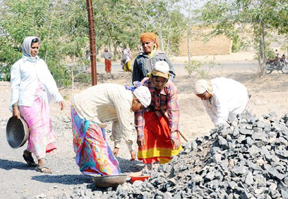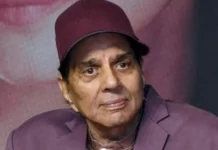 GENEVA: India needs to increase women’s participation in labour markets, build on its experience of its flagship employment scheme and provide social housing for the working poor to tackle unemployment, the ILO said today as it warned of a grim global unemployment situation.
GENEVA: India needs to increase women’s participation in labour markets, build on its experience of its flagship employment scheme and provide social housing for the working poor to tackle unemployment, the ILO said today as it warned of a grim global unemployment situation.
“Decreased labour force participation of women in India is a big problem. It is very important to promote their participation, their involvement in the Indian economy,” the chief of International Labour Organization’s (ILO) research division Raymond Torres said ahead of their new global unemployment report released today.
“And the second is to continue to build on the experience of Rural Employment Guarantee (Mahatma Gandhi National Rural Employment Guarantee Scheme or MGNREGS). There has been some debate in India recently but it would be a mistake to withdraw this, I think, because it is a very important social programme.
“And the third is to emphasize more social housing, especially, for the working poor. These three factors have to be borne in mind,” he told PTI.
In a beginning-of-the-year report on global employment trends in 2015 that also projected trends for 2016, the ILO said unemployment the world over rose last year and downturns in key emerging economies presented a grim outlook, with the situation expected to worsen further over the next two years.
India’s unemployment rate remained at 3.5 per cent in 2014 and 2015 but will decrease slightly to 3.4 per cent in 2016 and 2017, according to the ILO findings. However, the number of people seeking jobs will increase to 17.6 million people in 2017 from 17.5 million people in both 2015 and 2016.
The global unemployment figure for 2015 stands at a staggering 197.1 million an addition of 27 million people than the pre-crisis level of 2007 – and is forecast to increase further by about 2.3 million in 2016 to reach a total of 199.4 million unemployed people in the world. It will go up again by 1.1 million people in 2017.
“The global economy is not generating enough jobs to reverse the continuing increase in the alarmingly high unemployment situation in the world,” said the ILO Director- General Guy Ryder.
The increase in the number of job seekers in 2015 came mainly from the emerging and developing economies.
The unemployment level in developed countries has fallen slightly from 7.1 per cent in 2014 to 6.7 per cent in 2015 while the employment outlook has weakened in emerging and developing economies, notably in Brazil, China and other oil- producing economies.
“One set of figures, such as global unemployment, (however) does not tell the whole story of the state of employment in the world,” Ryder added. The report also sheds light on vulnerable employment, the working poor and informal work.
Vulnerable employment – self-employed, own-account workers, unpaid family contributors accounted for a whopping 46 per cent of the total people employed which adds to 1.5 billion people in the world who are vulnerably engaged. In both sub-Saharan Africa and southern Asia over 70 per cent of the employed are in vulnerable employment.
The number of vulnerably employed is projected to grow by 25 million in emerging economies in the next three years.
In 2015, about 327 million people were living in extreme poverty (less than USD 1.90 a day in purchasing power parity terms), and 967 million in moderate or near poverty (between USD 1.90 and USD 5 a day in PPP terms).
“Regrettably, the fact of being at work for many people does not guarantee an escape from poverty,” said the UN labour agency chief.
In 2015, the number of working-age population who did not participate in the labour market was 2 billion – an increase of 26 million over the previous year.
“There is much evidence that well-designed labour market and social policies are essential for boosting economic growth and addressing job crisis and almost eight years after the start of a global crisis, a strengthening of that policy approach is urgently needed,” Torres said in a press statement. -PTI





